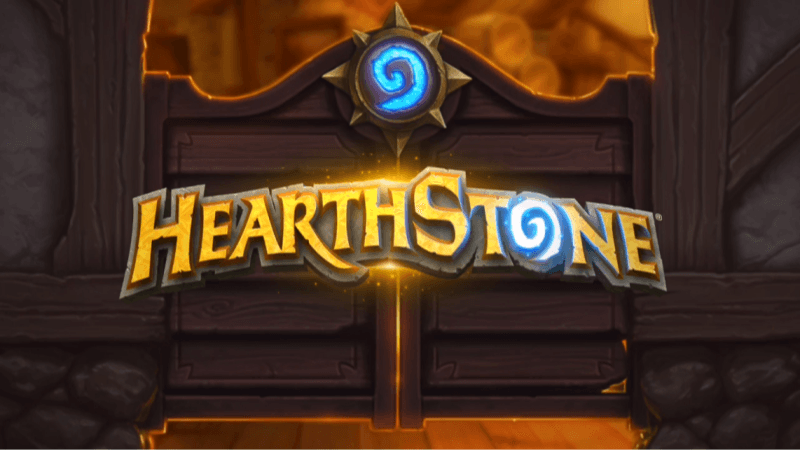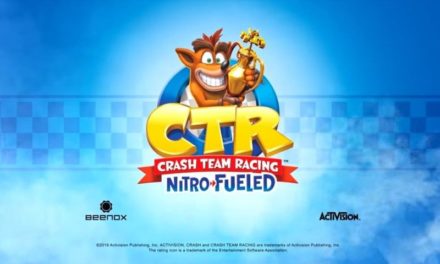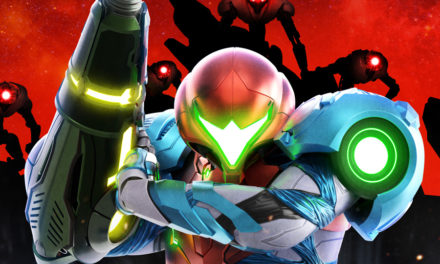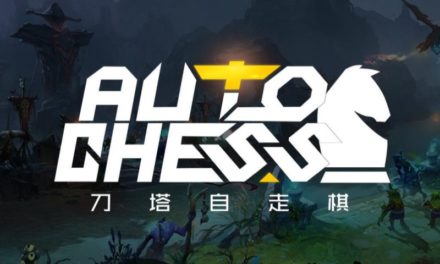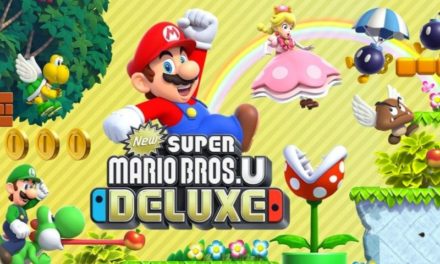HearthStone (HS) is a freemium online collectable PvP deckbuilding card game. It is published by Blizzard Entertainment and draws its lore and characters from their World of Warcraft franchise. Its basic concept was actually based on the short-lived real-world World of Warcraft Trading Card Game (WoW TCG) that was produced between March 2010 – August 2013, but sadly couldn’t compete with existing TCGs such as MTG. However, once it was reincarnated and adjusted into HearthStone in 2014, its popularity took off almost instantly and still remains one of the most viewed channels on Twitch. Ironically, this is quite different from the online version of MTG which, while still relatively successful, as not been able to achieve the same degree of popularity as its real-world counterpart.
The Basics
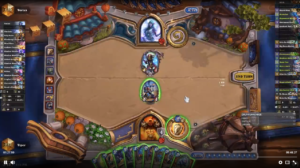
New players will automatically receive 88 free cards, with 43 of those being neutral and five each being class-specific. They can then quickly earn more free cards and gold by completing the tutorial and hero unlocking quests. Obviously, once the introductory phase is complete, it will become more difficult to acquire new cards in F2P mode.
Before starting a match, both players need to build a 30-card deck. Players can use an existing deck that they have saved in their archives, or they can create a new deck based on the cards that they own. The exception to this is PvC Boss decks that may contain more than 30 cards. New players can also visit forums for advice for constructing decks. There are also a number of pre-constructed decks that can be built according to recipes listed on forums, including DisguisedToastHS’s blog.
Boss decks may also contain unique boss cards that are not available to players. The only way for a player to have more cards in their deck is by playing cards with special ‘shuffle in’ abilities, and similar, allowing for up to a maximum of 60 cards in a deck.
This is important, as once the player’s deck is used up, the player starts experiencing fatigue every time they attempt to draw once their deck is exhausted. The fatigue affect works cumulatively, meaning that the first time that the player attempts to draw when they have no cards left, their hero will receive one damage. The second time, they will receive two damage. This ensures that games are not drawn out. However, if the game does somehow drag out, the game will end in a draw once the starting player has played their 95th turn.
Each player chooses a hero character to represent them. This differs when a player is fighting a computer-generated Boss deck, where the player will be combating a Boss. Each hero has 30 HP and a class attributed to them. This class dictates the type of cards and deck that the player can use during the game. Therefore, they are essentially skins for the type of class deck that the player would like to use for their match. The goal of the game is to reduce the opponent’s hero or boss to zero health. This is done by attacking opponents with their cards, which may be spells, or minions that can be boasted with item cards.
Gameplay
The first player is decided by a coin-toss mechanic, with the second player being granted a zero-manner cost card called ‘The Coin.’ It allows the player to gain an extra mana crystal for summoning purposes. Each player is then shown the first three or four cards in their hand, depending on whether they are the starting or second player. They are then given the opportunity to swap out the cards that are too expensive in exchange for new cards. This can only be done once, and the discarded cards will be reshuffled into the deck.
Players then take turns playing their cards, based on the mana cost. The objective is to diminish the opponent’s hero’s HP to zero before they manage to destroy your hero.
-
Heroes
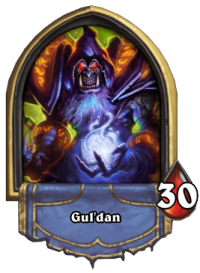 Heroes are collectible characters from the WoW universe that have 30 health and usually a special hero power and class attributed to them. It is each player’s goal to reduce the opponent’s hero or NPC boss’s health to zero. The class type attributed to the hero also dictates the class-type of all cards in the decks. They are therefore essentially skins for the type of class deck that the player would like to use for their match. All heroes also have their own specific audio emotes that are triggered by events in the game.
Heroes are collectible characters from the WoW universe that have 30 health and usually a special hero power and class attributed to them. It is each player’s goal to reduce the opponent’s hero or NPC boss’s health to zero. The class type attributed to the hero also dictates the class-type of all cards in the decks. They are therefore essentially skins for the type of class deck that the player would like to use for their match. All heroes also have their own specific audio emotes that are triggered by events in the game.Heroes can only attack an opponent when they have an item equipped. Otherwise, the hero will have no attack power. It may have a special ability attributed to it, though. An example of this is Jaina Proudmoore’s Fireblast ability that allows her to issue one attack per turn, in exchange for two mana. She is the first hero that players receive when they join HearthStone, with the other default heroes being unlocked as the player completes various quests in the game. She belongs to the mage class. Other hero skins can be either purchased or earned as rewards. They are purely aesthetic, offering no variation in hero-specific abilities from the original hero skin.
-
Classes
There are nine classes in the game, each with specific cards associated with them. However, whether these classes can be played is determined by whether the player has a hero of that class. Furthermore, each of these class decks can contain neutral cards. The classes are: Paladin, Warrior, Hunter, Shaman, Druid, Priest, Warlock, Mage, and Rogue.
-
Mulligan
At the start of the game, players will draw five random cards into their hands. If they don’t like their hand, they can discard each card in exchange for a new card. This can only be done once per card, with the discarded cards not being reshuffled into the deck.
-
Mana
Mana is required for a player to play cards from their hands. At the start of the game, each player receives one mana, meaning that they can only play one card to the value of one mana cost, or zero-cost cards. During each consecutive round, players will be able receive an extra manner until they reach the cap of ten mana in the tenth round. Therefore, players are restricted in the number of cards they can play per turn, based on the total cost of the cards that they play. An exception to this is card abilities, that may all the player to play or steal minions to play on their side of the board.
-
Match-making
In both Play mode and Arena mode, the HearthStone system generates pairings based on the players’ performance history against other players. In the Arena and Casual Play modes, new players will be set against each-other for the first few games. Wild mode is more of a risk, as players could find themselves marched against pros. On the bright side, if a player sees that they have no chance of winning a game, they are allowed to concede the match at any time. This will award the other player a victory, as well as save both players time.
Cards
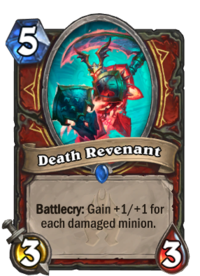
Death Revenant
(Rare Warrior Minion)
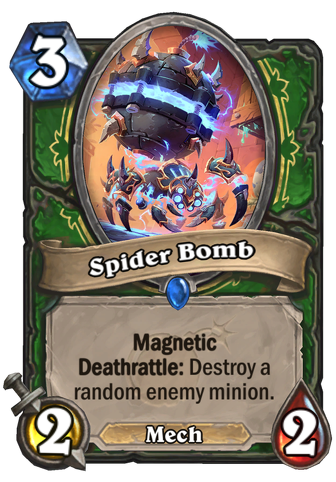
Spider Bomb
(Rare Minion)
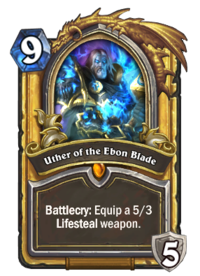
Uther of the Ebon Blade
(Gold Legendary Paladin Hero Card)
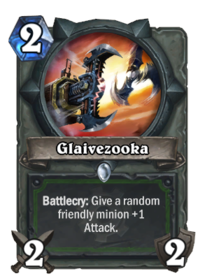
Glaivezooka
(Common Hunter Weapon)
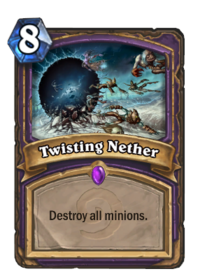
Twisting Nether
(Epic Warlock Spell)
There are currently around 2,240 playable cards in Heathstone. 150 of these cards are free, meaning that they acquirable as rewards for completing the early once-off quests and level-ten class level-ups in Hearthstone. They can only be acquired in this way. Furthermore, only about 1,730 of these cards are collectable through purchasing new decks, when combined with the original free decks. This means that the remaining 510 cards are generally either boss cards that players can never own, debug cards that are used by developers to test for bugs or produced from card effects. There are other types of uncollectable cards as well that can only be accessed during gameplay, such as the various minion cards that were introduced with the Rise of Shadows expansion or through completing quests of card objectives. Hearthstone releases new expansion packs three times a year. The first expansion of each year also cycles out the oldest three expansion sets from the Standard to Wild format.
Some cards are neutral and can therefore be used irrespective of the hero’s class. However, other cards are allocated with certain class attributes. This is arguably crucial to the game, as it limits the type of decks that a player can build, as well as the play style that they will adopt.
Card types:
Cards are divided into five rarity groups, namely Free, Common, Rare, Epic and Legendary. The Common-Legendary groups also come in a rarer gold variant that is more expensive to craft, but otherwise offers the same abilities as it’s normal variant.
- Minions
When a new minion card is played, it can only attack on the following turn. Until then, it remains ‘asleep.’ When minions of equal attack and defense attack each other, they both get voided. However, if one has a greater attack strength than the other’s defense, then the defending card will be defeated. If one minion has a lower defense than the attacker’s attack, then it destroys the defending card. - Spells
These cards cost mana and cause a game affect. Once cast, it is discarded. They have no attack or health attributes.
- Weapons
Instead of attack and health icons, they have attack and durability attributes. They are used to buff the attack or defense strength of cards or heroes.
- Hero Cards
Hero cards replace the player’s Hero, as well as its associated power. However, the heros current and maximum health capacities remain the same. They help in that they usually add an armor value that protects them from a certain amount of damage. They are good cards to play when the hero has low health.
Special Abilities
Some cards have text with special abilities listed. Below is a list of some of the common types:
- Battlecry – this affect is activated as soon as the card is played.
- Deathrattle – activates when the card is destroyed.
- Poison – this card will destroy any minion that it attacks, regardless of the difference between the opposing minion’s defense and the offensive player’s attack.
- Taunt – these cards must be attacked before other cards can be attacked.
- Secret – this spell card is only revealed when its affect is activated. Therefore, it is a type of trap card.
- Lifesteal – damage done by the card is siphoned into the hero’s health points.
- Divine Shield – it will not be harmed the first time that it’s attacked.
- Echo – this card can be played multiple times during in a single turn.
- Freeze – any frozen characters will lose their next attack.
- Rush/Charge – the minion will be able to attack on the first turn that it’s played.
- Overkill: If the damage dealt by a minion or spell with overkill exceeds the health of the opponent’s minion, it triggers an effect.
- Reborn: after this creature is killed, it resurrects with one health.
- Quest: once the card’s objective is achieved, a reward is granted to the player. This could be another playable card, instant summoned creature, added benefit or upgraded hero power, among others.
Acquiring New Cards
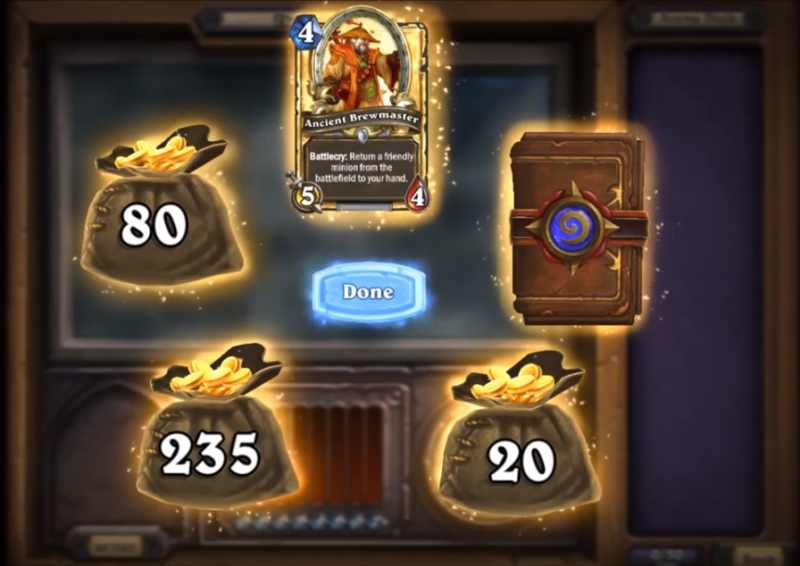
There are a few in-game quests and challenges that award players with either cards, gold, Arcane dust or classic card packs. Some quests are one-time only, such as Introductory quests. Many of these can be completed in practice mode, which is great for beginners.
Then, there are daily quests. Every day when a player logs in, a player will be issued a quest. The completion of these quests rewards the player with 50 – 100 gold or Classic Card packs. Players have three daily quest slots available, and if there is a quest that they don’t like, they are able to switch out one of them once per day. It will then be replaced by another randomly-generated quest.
There are also promotional quests and limited-time seasonal and event quests. These are unique, one-time quests, most of which are currently discontinued. There is rumored to be a 20th-pack pity legendary guaranteed to players, with a fail-safe against acquiring more than one of the same legendary through packs.
Ranking
Each season, a player starts off at level 50 and have to defeat other players to improve their ranking. This can earn the player various rewards depending on how high the rank. Normal players begin at level 25 or higher, depending on their previous season’s ranking. For instance, the minimal reward is a new card back design, but reaching level 20 and upwards also earns the player one or more gold cards. Win streaks increase the rate at which a player acquires new ranking stars.
New players earn extra rewards for ranking, as they start at level 50. As they reach certain milestones, they will unlock a number of card packs. At level 45, 40, 35, and 30 , they will receive three classic card packs, and at level 25 they will earn two classic packs, as well as two packs of each of the latest four expansions.
Newest Expansion: Saviors of Uldum
The next Hearthstone expansion is slated for release on August 6, 2019. Below is a card reveal and gameplay sample from the Hearthstone Arena YouTube channel:
The free mobile app or PC version can be downloaded for free through Amazon or from Blizzard’s website.


